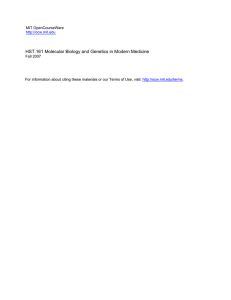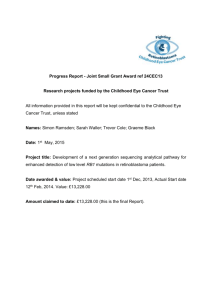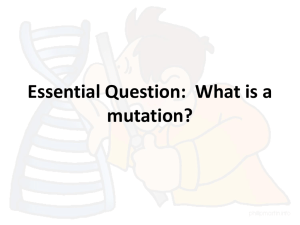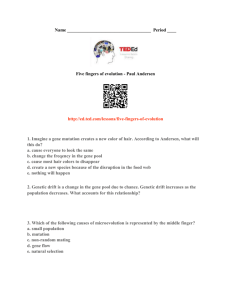lay summary of the final report here
advertisement
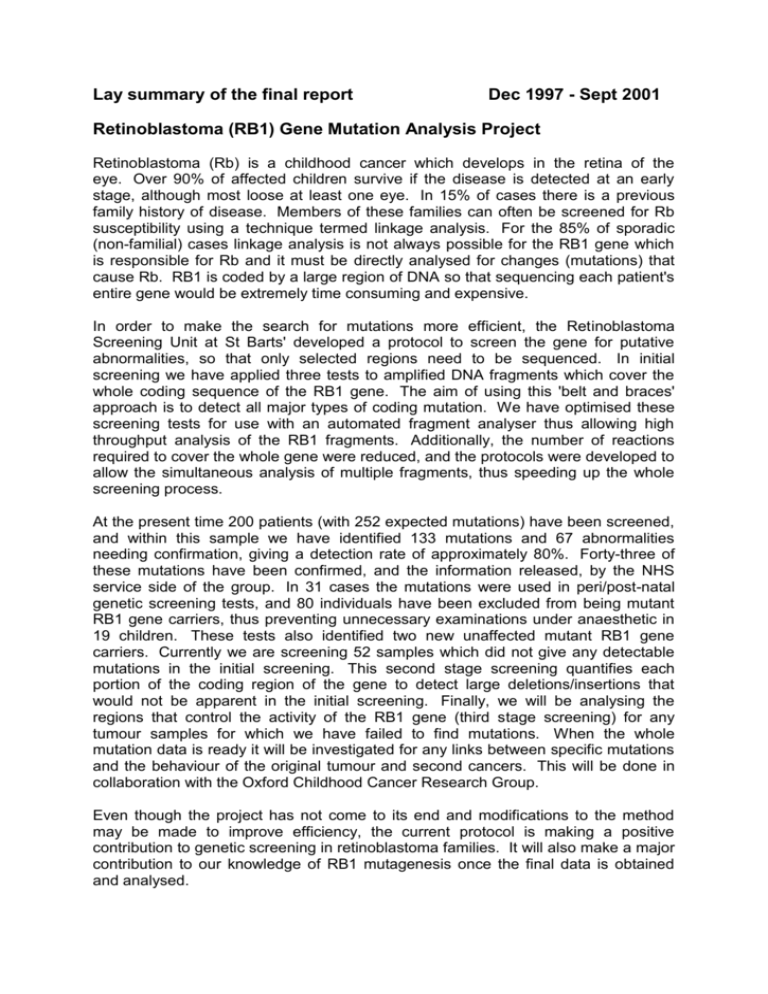
Lay summary of the final report Dec 1997 - Sept 2001 Retinoblastoma (RB1) Gene Mutation Analysis Project Retinoblastoma (Rb) is a childhood cancer which develops in the retina of the eye. Over 90% of affected children survive if the disease is detected at an early stage, although most loose at least one eye. In 15% of cases there is a previous family history of disease. Members of these families can often be screened for Rb susceptibility using a technique termed linkage analysis. For the 85% of sporadic (non-familial) cases linkage analysis is not always possible for the RB1 gene which is responsible for Rb and it must be directly analysed for changes (mutations) that cause Rb. RB1 is coded by a large region of DNA so that sequencing each patient's entire gene would be extremely time consuming and expensive. In order to make the search for mutations more efficient, the Retinoblastoma Screening Unit at St Barts' developed a protocol to screen the gene for putative abnormalities, so that only selected regions need to be sequenced. In initial screening we have applied three tests to amplified DNA fragments which cover the whole coding sequence of the RB1 gene. The aim of using this 'belt and braces' approach is to detect all major types of coding mutation. We have optimised these screening tests for use with an automated fragment analyser thus allowing high throughput analysis of the RB1 fragments. Additionally, the number of reactions required to cover the whole gene were reduced, and the protocols were developed to allow the simultaneous analysis of multiple fragments, thus speeding up the whole screening process. At the present time 200 patients (with 252 expected mutations) have been screened, and within this sample we have identified 133 mutations and 67 abnormalities needing confirmation, giving a detection rate of approximately 80%. Forty-three of these mutations have been confirmed, and the information released, by the NHS service side of the group. In 31 cases the mutations were used in peri/post-natal genetic screening tests, and 80 individuals have been excluded from being mutant RB1 gene carriers, thus preventing unnecessary examinations under anaesthetic in 19 children. These tests also identified two new unaffected mutant RB1 gene carriers. Currently we are screening 52 samples which did not give any detectable mutations in the initial screening. This second stage screening quantifies each portion of the coding region of the gene to detect large deletions/insertions that would not be apparent in the initial screening. Finally, we will be analysing the regions that control the activity of the RB1 gene (third stage screening) for any tumour samples for which we have failed to find mutations. When the whole mutation data is ready it will be investigated for any links between specific mutations and the behaviour of the original tumour and second cancers. This will be done in collaboration with the Oxford Childhood Cancer Research Group. Even though the project has not come to its end and modifications to the method may be made to improve efficiency, the current protocol is making a positive contribution to genetic screening in retinoblastoma families. It will also make a major contribution to our knowledge of RB1 mutagenesis once the final data is obtained and analysed. We would like to thank the Retinoblastoma Society (now known as the Childhood Eye Cancer Trust) for funding this project. This funding allowed the development of a full RB1 mutation screening method at Barts' which we can now offer as a routine service to the patients under NSCAG funding.

